Living in the Philippines, Bataan to be exact, where coconut trees flourish in nearly every backyard and community, fresh buko juice remains an unmatched natural refreshment that perfectly captures the essence of Filipino hospitality.
Having grown up in Bataan, where coconut farming is part of our cultural heritage, I've spent years perfecting the art of selecting, preparing, and serving this beloved drink.
This authentic buko juice recipe combines generations of traditional preparation methods with modern serving techniques, ensuring you get that perfect balance of pure coconut water and tender young coconut meat strips.
Whether you're seeking a healthy alternative to commercial beverages or craving that quintessential taste of Philippine summers, this step-by-step guide will help you create the most refreshing and nutritious buko juice right in your own kitchen.
Jump to:
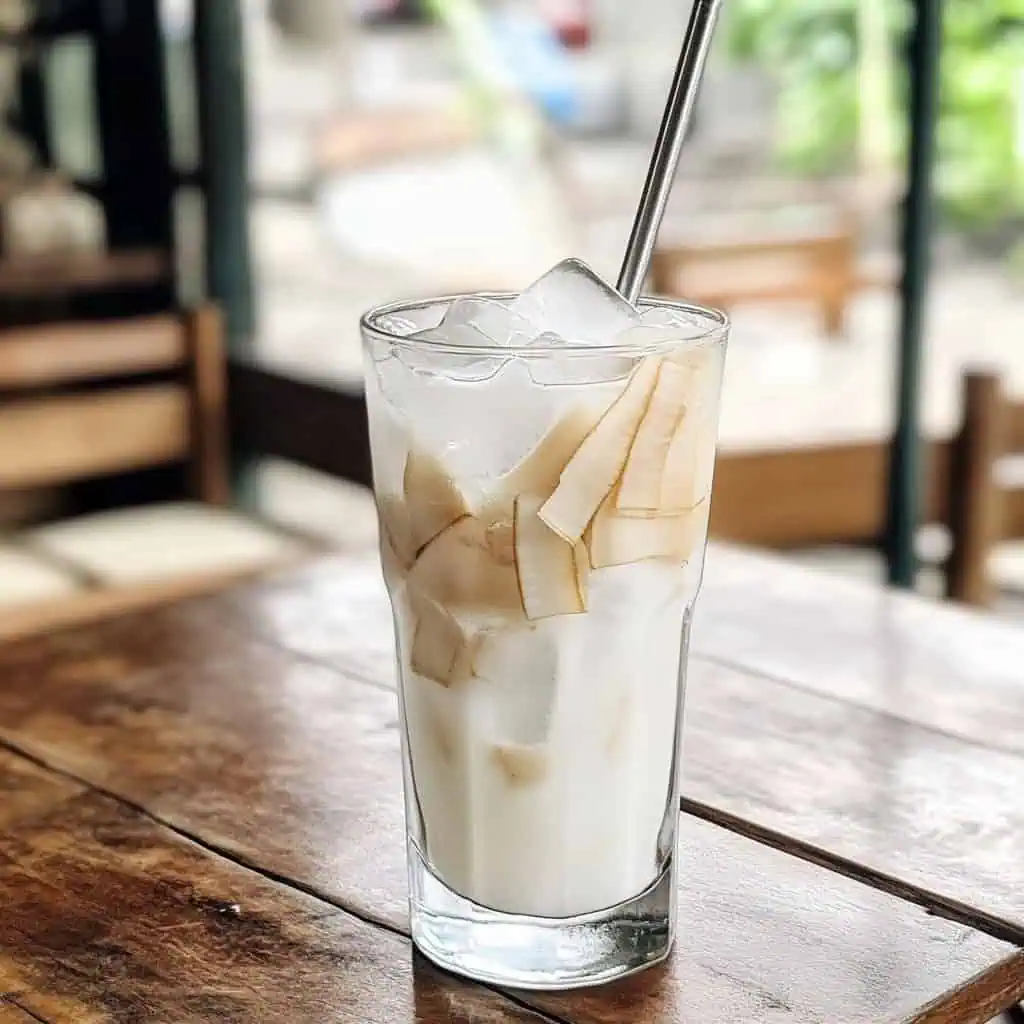
Why You'll Love This Recipe
- Pure & Natural: Experience the unmatched freshness of genuine coconut water, straight from young coconuts
- Health-Packed: Rich in electrolytes, potassium, and natural minerals
- Versatile: Perfect for any occasion - from beach days to family gatherings
- Budget-Friendly: More economical than commercial coconut water
- Authentic Taste: Captures the true essence of Philippine refreshment
- Customizable: Easy to adjust sweetness and consistency to your preference
Ingredients
Young coconuts are the heart of this recipe, selected specifically for their sweet, nutrient-rich water and tender meat that can't be replicated with store-bought alternatives.
The optional sugar is included for those times when coconuts aren't quite sweet enough on their own, allowing you to customize the drink to your taste preferences. Ice cubes aren't just for cooling, they enhance the refreshing quality that makes buko juice the perfect tropical beverage.
Together, these simple ingredients create a drink that's both authentic and nourishing, capturing the pure essence of Filipino culinary tradition without any artificial additives or preservatives.

- 2 young coconuts (choose coconuts that feel heavy and make a sloshing sound when shaken)
- Ice cubes
- Fresh coconut meat (scraped from inside the coconuts)
- 2 tablespoons sugar (optional)
Equipment
- Sharp knife: For safely opening the coconut if not pre-opened
- Sharp spoon: Essential for scraping the soft coconut meat from the shell in long, ribbon-like strips
- Fine strainer: Removes any shell particles or impurities from the coconut water
- Glass pitcher: Ideal for mixing and serving the buko juice
- Serving glasses: Tall glasses work best for showcasing both the liquid and meat
- Long spoons: Allows guests to enjoy both the refreshing liquid and tender coconut meat
- Airtight container: For storing any leftover juice
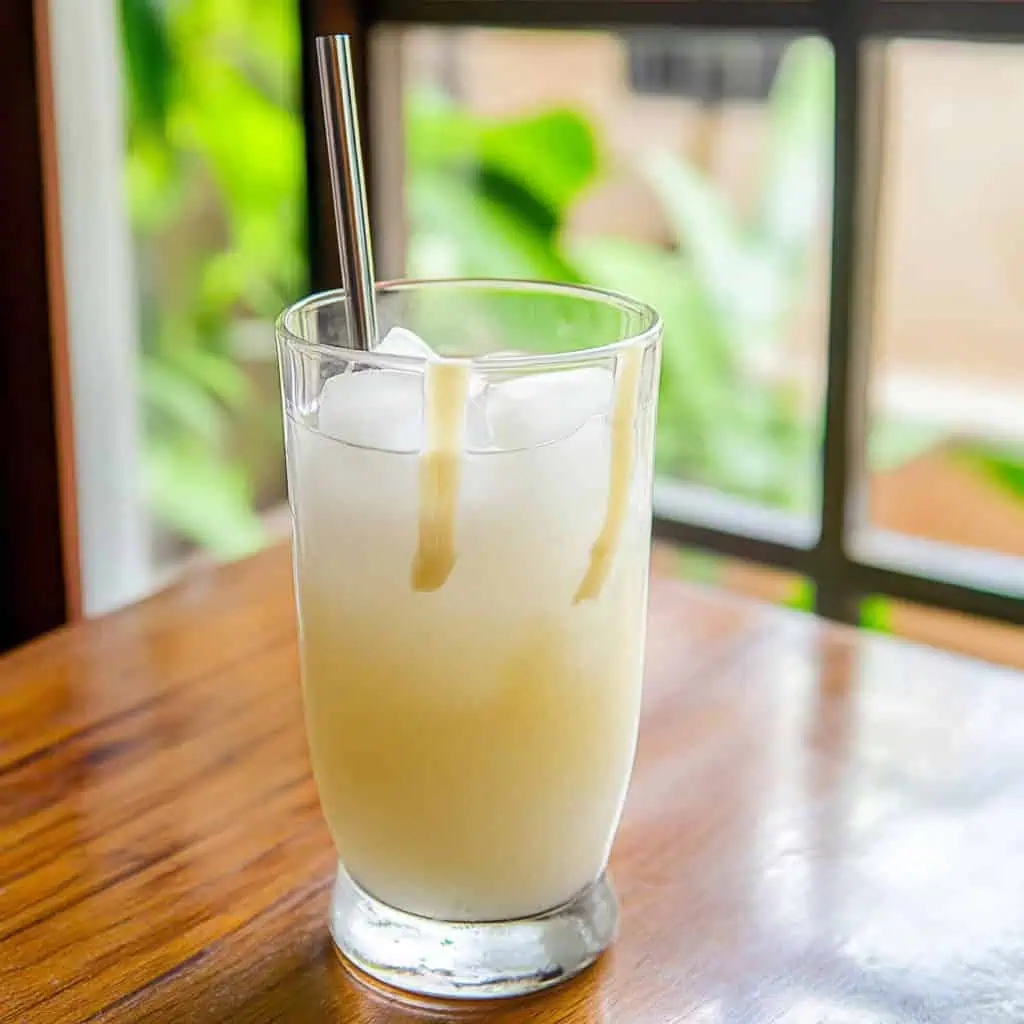
How To Make
- Start by selecting young coconuts that feel heavy and make a sloshing sound when shaken. If not pre-opened, have them carefully cracked open (ideally by an experienced vendor or family member for safety).
- Once opened, immediately strain the coconut water through a fine strainer into a clean container to remove any shell particles or impurities. This ensures a clean, smooth drink. Keep the strained water chilled while preparing the meat.
- Using a sharp spoon, carefully scrape the soft coconut meat from the shell. Try to maintain long, ribbon-like strips of the meat for traditional presentation. Avoid scraping too deeply into the shell as this can add unwanted tough pieces.
- In a glass pitcher, combine the strained coconut water and meat strips. Taste the mixture first before adding any sugar, as young coconuts are naturally sweet. If desired, add sugar to taste and stir until dissolved.
- Add ice cubes to the pitcher or individual serving glasses. Pour the buko juice mixture over the ice. Traditional serving includes both the water and generous amounts of the meat strips.
- Serve immediately in tall glasses, preferably with long spoons to enjoy the coconut meat. For best taste and nutritional benefits, consume within 4 hours of opening the coconuts.

Tips from Lola's Kitchen
- Selection is key: The best coconuts make a good sloshing sound when shaken, indicating plenty of water inside
- Age matters: Look for coconuts with softer meat, which indicates a younger fruit with sweeter water
- Fresh is best: Try to consume your buko juice within 4 hours of preparation for optimal flavor and nutritional benefits
- Scraping technique: Use gentle, curved motions when scraping the meat to maintain those beautiful ribbon-like strips
- Natural sweetness: Always taste before adding sugar – many young coconuts are perfectly sweet on their own
- Serving temperature: Buko juice is most refreshing when served immediately after preparation, with plenty of ice
- Traditional enjoyment: Sip the water first, then use your spoon to enjoy the meat strips – this is the Filipino way!
Substitutions
- Sweeteners: Replace white sugar with honey, stevia, coconut sugar, or agave nectar for different flavor profiles
- Ice alternatives: Use frozen coconut water cubes instead of regular ice to prevent dilution
- Coconut options: If fresh young coconuts aren't available, packaged coconut water can work in a pinch, though it won't have the same authentic taste or texture
- Flavor enhancers: A tiny squeeze of lime or a few mint leaves can add a refreshing twist without overpowering the delicate coconut flavor
- Non-alcoholic option: Replace some of the coconut water with sparkling water for a bubbly version
Troubleshooting
- Bitter taste: Your coconut may be too mature. Next time, select younger coconuts with softer meat and thinner shells.
- Brown discoloration: Oxidation has occurred. Serve immediately after opening and preparation to prevent this issue.
- Grainy texture: Your straining method may need improvement. Use a finer strainer or double-strain through cheesecloth.
- Not sweet enough: Your coconuts may be slightly underripe. Add a small amount of sugar or preferred sweetener.
- Too watery: You may need more meat strips. Ensure you're thoroughly scraping all the soft meat from the shell.
- Separation of meat and water: This is normal! Simply stir before serving or encourage guests to use a spoon.
Storage & Reheating
- Refrigeration: Store any leftover buko juice in an airtight container in the refrigerator for up to 24 hours
- Before serving: Stir well if separation occurs between the water and meat
- Best practices: Do not freeze buko juice as it significantly alters the texture of the meat and taste of the water
- Freshness test: If the juice develops any sour smell or taste, discard immediately
- Container tips: Glass containers are best for storing as they don't absorb odors or affect the flavor
- Serving from storage: Add fresh ice when serving refrigerated buko juice to restore its refreshing quality
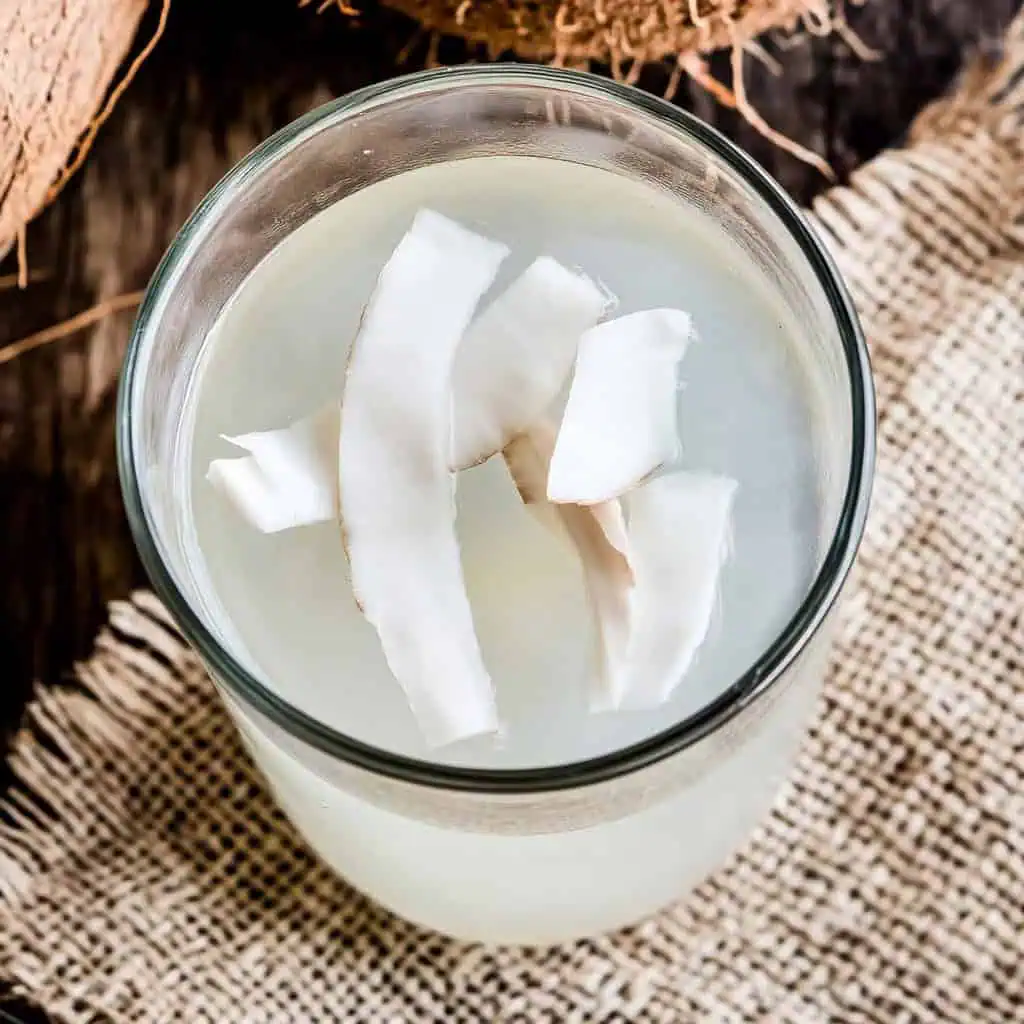
FAQ
How do I know if a coconut is young enough for buko juice?
Young coconuts typically have a light-colored husk, make a sloshing sound when shaken, and yield when pressed with your thumb. The water inside should be clear, not cloudy.
Can I make buko juice ahead of time for a party?
While best served fresh, you can prepare it up to 24 hours in advance. Keep refrigerated in an airtight container and stir well before serving.
Is buko juice safe for people with diabetes?
Natural buko juice without added sugar contains natural sugars but also has a low glycemic index. Consult your healthcare provider for personalized advice.
How many calories are in a serving of buko juice?
Without added sugar, one serving (about 8 oz) contains approximately 140 calories, primarily from natural coconut sugars.
Can I use mature coconuts instead of young ones?
No, mature coconuts have significantly different water and meat textures. Young coconuts are essential for authentic buko juice.
How nutritious is buko juice?
Extremely! It's rich in potassium, magnesium, calcium, and other electrolytes, making it an excellent natural hydrator.
What's the best time of year to make buko juice?
Young coconuts are available year-round in tropical regions, but they're especially refreshing during hot summer months.
Can I add alcohol to make a cocktail version?
Absolutely! A splash of rum or vodka pairs beautifully with fresh buko juice for an adult tropical beverage.
Related
Looking for other recipes like this? Try these:

Fresh Buko Juice Recipe (Filipino Young Coconut Drink)
Equipment
- Sharp spoon for scraping (kutsarang panghiwa)
- Strainer [Salaan]
- Glass pitcher (pitsel)
- Serving glasses (mga baso)
- Knife for opening coconut (if not pre-opened)
Ingredients
- 2 young coconuts Choose coconuts that feel heavy and make a sloshing sound when shaken
- Ice cubes mga yelo
- Fresh coconut meat laman ng buko
- 2 tablespoons sugar optional (asukal)
Instructions
- Start by selecting young coconuts that feel heavy and make a sloshing sound when shaken. If not pre-opened, have them carefully cracked open (ideally by an experienced vendor or family member for safety).
- Once opened, immediately strain the coconut water through a fine strainer (salaan) into a clean container to remove any shell particles or impurities. This ensures a clean, smooth drink. Keep the strained water chilled while preparing the meat.
- Using a sharp spoon, carefully scrape the soft coconut meat from the shell. Try to maintain long, ribbon-like strips of the meat (laman ng buko) for traditional presentation. Avoid scraping too deeply into the shell as this can add unwanted tough pieces.
- In a glass pitcher (pitsel), combine the strained coconut water and meat strips. Taste the mixture first before adding any sugar (asukal), as young coconuts are naturally sweet. If desired, add sugar to taste and stir until dissolved.
- Add ice cubes (mga yelo) to the pitcher or individual serving glasses. Pour the buko juice mixture over the ice. Traditional serving includes both the water and generous amounts of the meat strips.
- Serve immediately in tall glasses, preferably with long spoons to enjoy the coconut meat. For best taste and nutritional benefits, consume within 4 hours of opening the coconuts. If storing, keep refrigerated in an airtight container for no more than 24 hours.
Tips from Lola's Kitchen
- Choose coconuts that make a sloshing sound when shaken
- The softer the meat, the younger the coconut
- Best served within 4 hours of opening
- Keep refrigerated to maintain freshness
- Use a metal straw for an eco-friendly option
The Story Behind Buko Juice
Growing up in the Philippines, the distinct sound of machetes hitting young coconuts is as familiar as the morning crow of roosters. This refreshing drink, known locally as "Buko Juice," has been an integral part of Filipino culture long before the world recognized coconut water as a premium health beverage. In every corner of our 7,641 islands, from the busy streets of Manila to the serene beaches of Palawan, you'll find vendors skillfully cracking open these green treasures.
The tradition of drinking buko juice dates back centuries, with our ancestors recognizing its incredible health properties and refreshing qualities. Indigenous communities across the Philippine archipelago have long considered the coconut palm as the "Tree of Life" (Puno ng Buhay), using every part of this versatile plant. The young coconut's water, particularly prized for its cooling properties, became a natural remedy for various ailments and a beloved refreshment during the tropical country's warm seasons.
In the 1960s and 70s, as beach tourism began to flourish in destinations like Boracay and Bohol, buko juice became synonymous with the Philippine tropical experience. International visitors were captivated by the theatrical presentation of vendors wielding their machetes with impressive precision, transforming green coconuts into natural beverage containers. This practice, passed down through generations, requires considerable skill to crack the coconut just right, creating a perfect opening for drinking while preserving the precious liquid inside.
What sets Philippine buko juice apart from other coconut water varieties is our unique tradition of incorporating the fresh, tender coconut meat (buko strips) into the drink. This addition transforms a simple beverage into a satisfying treat that can serve as both refreshment and light snack. Local vendors often say, "Hindi kumpleto ang buko juice kung walang laman" (Buko juice isn't complete without the meat), highlighting how this preparation method has become deeply ingrained in Filipino food culture.
Today, as global interest in natural and healthy beverages continues to rise, buko juice stands out for its authenticity and simplicity. Unlike commercially packaged coconut water, fresh buko juice offers an experience that connects drinkers to centuries of Filipino tradition. The practice of drinking it fresh, straight from the coconut, remains a cherished custom, particularly during family gatherings, beach outings, and summer festivities.
Modern health enthusiasts are now discovering what Filipinos have known for generations – that buko juice is nature's sports drink. Rich in electrolytes, particularly potassium, it serves as a natural alternative to artificial energy drinks. In fact, during World War II, both Allied and Japanese forces used sterile coconut water for emergency plasma transfusions when medical supplies ran low, a testament to its remarkable composition.
In Filipino households, buko juice is more than just a beverage; it's a remedy passed down through generations. Lolas (grandmothers) often recommend it for urinary tract infections, while many believe it helps clear skin problems and ease digestive issues. During pregnancy, expectant mothers are encouraged to drink buko juice to ensure healthy development of their babies, a practice that continues to be endorsed by many Filipino healthcare providers.
The sustainability aspect of buko juice also resonates with modern environmental concerns. Traditionally served in its natural container – the coconut shell – it represents one of the most eco-friendly beverages available. Many establishments now serve it with reusable metal or bamboo straws, combining tradition with contemporary environmental consciousness.
Whether you're exploring the bustling streets of Metro Manila, relaxing on the pristine beaches of Siargao, or enjoying a family gathering in a provincial backyard, buko juice remains an authentic taste of Philippine hospitality. It stands as a testament to our culture's deep connection to natural, wholesome food and beverages, offering not just refreshment, but a sip of our heritage.
For the perfect buko juice experience, locals recommend enjoying it during mid-morning, when the sun's heat begins to intensify. This is when the natural sweetness of the coconut water is most appreciated, and the cooling effect of this beloved drink can be fully enjoyed. As we say in the Philippines, "Sa init ng panahon, buko juice ang katapat" (For hot weather, buko juice is the answer).
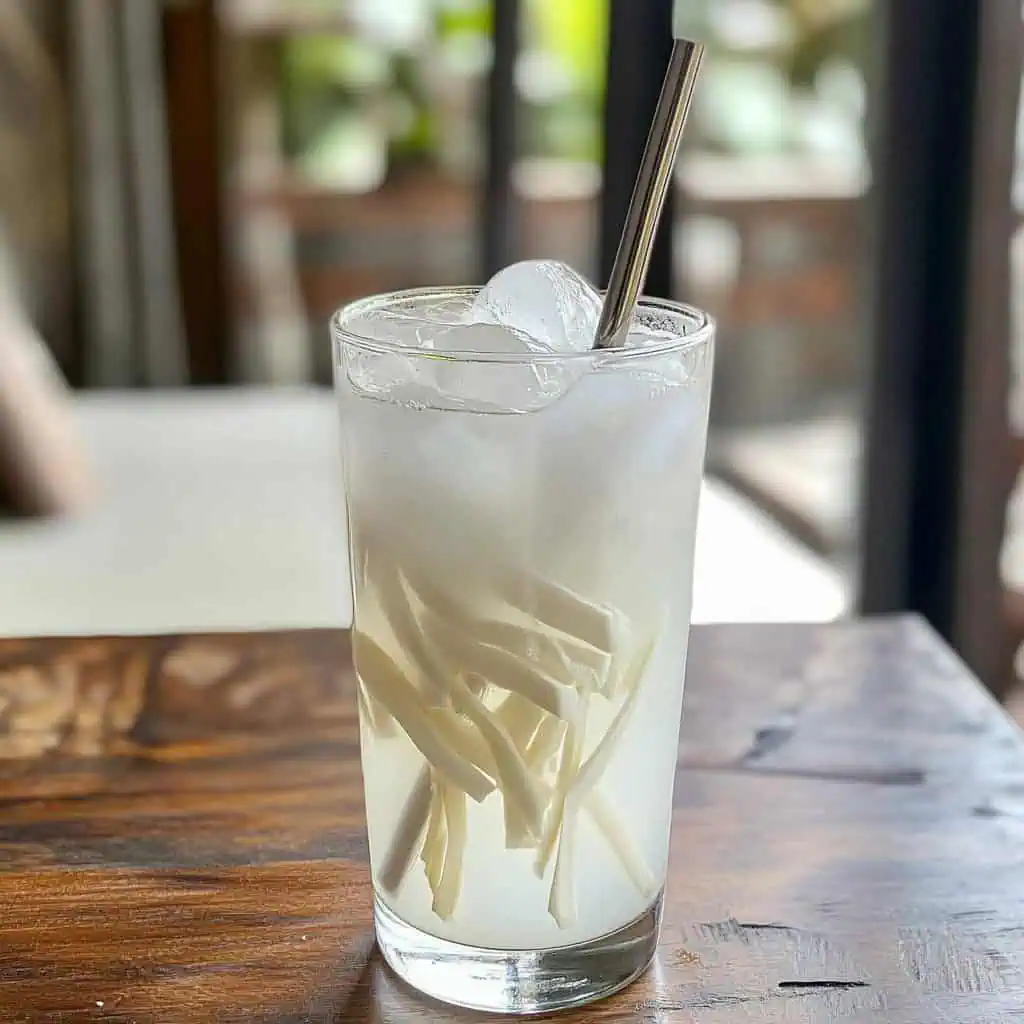







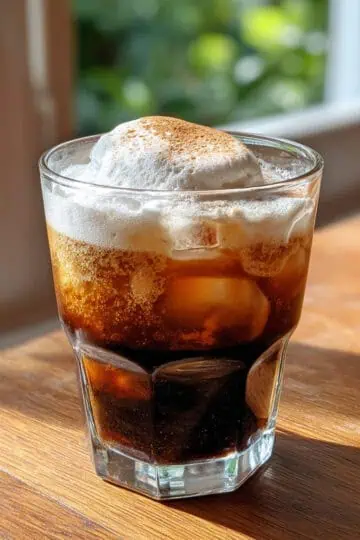

Comments
No Comments